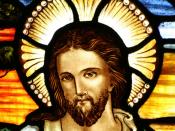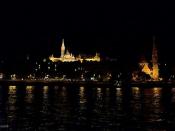"The Symbolism of Churches and Church Ornaments" Churches during the twelfth and thirteenth century were transformed from just being a building into a building of reference and symbolism to who ever partook in it. William Durand in his essay of "The Symbolism of Churches and Church Ornaments" he reveals the ideas and symbolisms that the churches illustrated. His essay also reveals the Church as an illustrative role and function in medieval society and the attitudes towards these symbolisms.
The Church is more than just a building. It has two meanings: one is that it is "a material building, wherein the Divine Offices are celebrated: the other, a spiritual fabric, which is the Collection of the Faithful" (1). The name church has symbolic meaning and relevance not only for the physical realm but also for the spiritual realm. The Church was given the name because it represented to the medieval civilization that the Church is a congregation for God.
Various stones that make up the church also has symbolism, in that it could be made up of various men The Material of the Church is characteristic of the spiritual Church. Because the Catholic Church is universal every Catholic Church should be one congregation. This is portrayed in the doctrine because the doctrine also symbolizes the universal and flexible nature of the doctrine to every man or woman.
The Church is also a function for doctrinal issues. The Church has many names. The House of God is one of those. This symbolizes the relevance that it is not just a building but it is a place where God's presence is seen and welcomed. This relates to a medieval society because by going to a church he/she is no longer in a realm of physical anguish but is in the presence of the...

